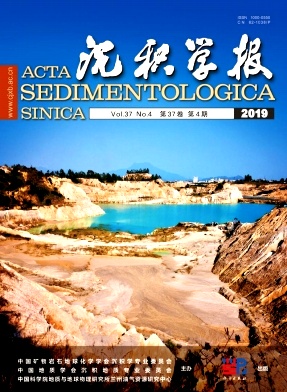Control Factors and Evolution Progress of Depositional System Transition from Meandering River Delta to Braided River Delta: Case study of Shan2 member to He8 member, Ordos Basin
doi: 10.14027/j.issn.1000-0550.2018.154
- Received Date: 2018-04-04
- Rev Recd Date: 2019-04-28
- Publish Date: 2019-08-10
-
Key words:
- meandering river delta /
- braided river delta /
- base-level fluctuation /
- sediment supply /
- paleo-slope /
- paleoclimate /
- evolution progress
Abstract: The Ordos Basin is one of the largest petroliferous basins in China. Exploration has shown that the Shan2 to He8 members in the SE part of the basin has considerable exploration potential. Previous studies have focused mainly on the sand body distribution within a single member,but have not discussed the overall sedimentary evolu-tion for a number of members. To infer the transition from meandering river delta to braided river delta and analyze the main controlling factors of the evolutionary process,and to reconstruct the true evolution,in this study facies log-ging from core samples was integrated with analytical data to recognize the delta sedimentary facies. Changes of the base-level elevation enabled the sediment supply to be recognized,and to reconstruct the paleo-geomorphology and paleoclimate in the study area,and the evolution of a meandering river delta to a braided river delta. The elevation of the base-level surface sloped downwards between Shan2 and He8,enhancing channel sedimentation and increasing the supply of sediment. It was then inferred that the gradation of paleo-thickness due to compaction gradually in-creased the ancient slope. Analysis of lithofacies together with geochemical characterization indicated that the ancient air temperature gradually decreased. A comprehensive analysis of these four factors has provided a theoretical basis for the study of the evolution of meandering river deltas to braided river deltas. Such reconstruction of the sedimentary evolution process is significant for hydrocarbon exploration. In addition,the study provides a theoretical basis for the spatiotemporal evolution of various types of delta.
| Citation: | ZHAO ChenFan, YU XingHe, FU Chao, HAN XiaoQin, DU YongHui. Control Factors and Evolution Progress of Depositional System Transition from Meandering River Delta to Braided River Delta: Case study of Shan2 member to He8 member, Ordos Basin[J]. Acta Sedimentologica Sinica, 2019, 37(4): 768-784. doi: 10.14027/j.issn.1000-0550.2018.154 |






 DownLoad:
DownLoad: